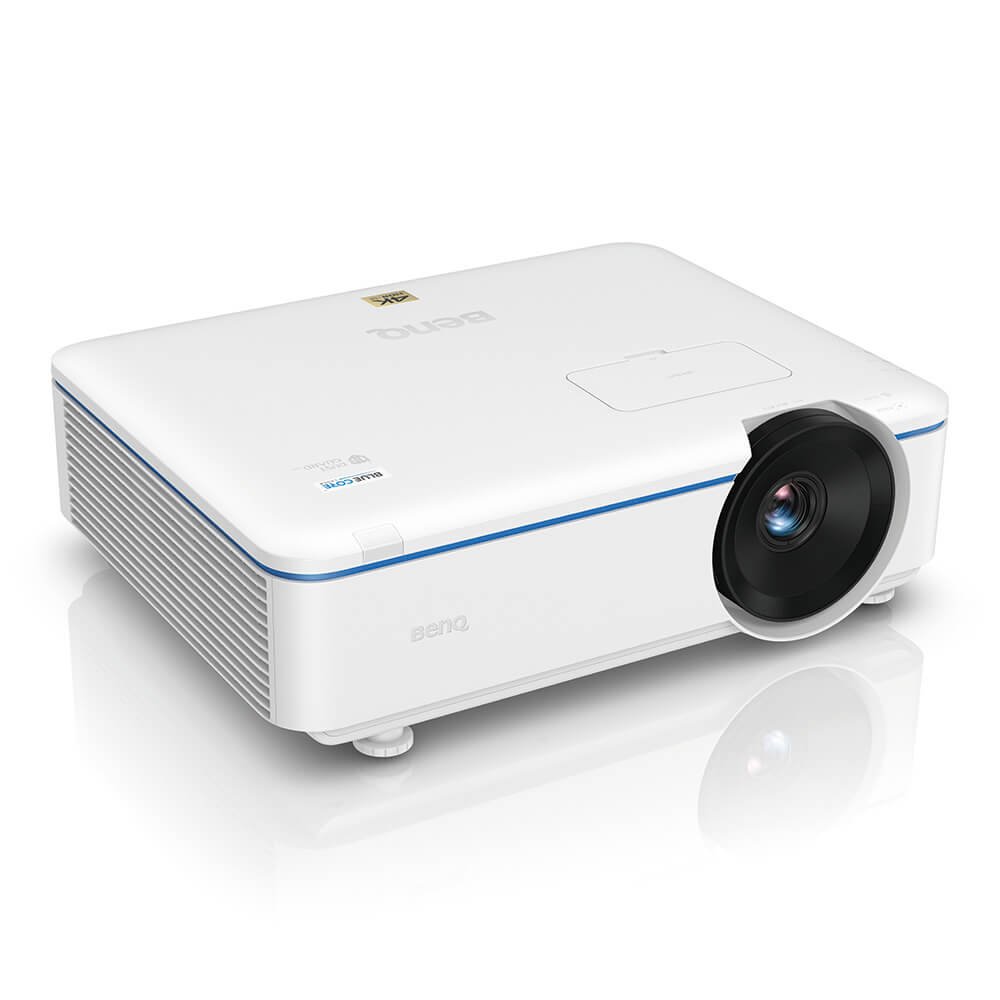What are the best alternatives to the new Panasonic laser projectors today?
- BenQ
- 2020-06-12
Both Panasonic and BenQ were one of the first projector companies to develop commercial projectors using the latest laser light technology that lowers your overall cost of ownership with brighter, longer lasting images. Their newest laser projectors deliver 5000 lumens with street prices under $3000, making them ideal for classrooms, training rooms, or collaboration spaces. So what should you be looking for when evaluating the best alternatives to compare with these new Panasonic laser projectors? Here are four key factors to consider:
For a fair comparison, we will use the new 5000 lumen Panasonic PT-VMZ50U laser projector against two new 5000 lumen models from BenQ, the BenQ LU930 and the LK952. According to Futuresource, in 2019 BenQ was the leading projector brand in the world using DLP technology, while Panasonic is ranked 9th in market share and has models with traditional three panel LCD architecture, as well as DLP technology. All the new models from both Panasonic and BenQ generate very bright images, have 20,000-hour laser life, can be controlled via the network, and have optical lens shift. Both projector brands are used in thousands of rooms around the world and have won numerous awards. Here are the biggest differences between these three models:
The new Panasonic laser projectors are designed to display their images on a large screen – typically 100 inches or larger. For business projectors - you want to remember that as the screen size becomes larger, resolution becomes more important to ensure a quality image. Both the Panasonic PT-VMZ50U and the BenQ LU930 have WUXGA resolution with 2.3 million pixels, but the BenQ LK952 5000 lumen laser projector has true 4K resolution with 8.3 million pixels for under $5000. Panasonic also has true 4K UHD resolution projectors, but only for very higher brightness applications at a cost of over $100,000. For house of worship, public display, or museum applications, the difference between a 2.3 and 8.3 million pixels is amazing - and an upgrade worth considering.
5000 lumen projectors are often used in public spaces and rack up a lot of hours over the years, so all BenQ laser projectors (and the higher end Panasonic laser projectors) use Texas Instruments DLP chips which are rated for 100,000 hours of use. This is the same technology currently used in most digital cinemas, and every IMAX movie theater due to its ability to maintain a high-quality image over time. The main advantage of DLP technology in a 5000 lumen projector is that the projector will never turn yellow over time – ensuring your investment will last not only through the warranty period but for many years afterward. For the PT-VMZ50U projector, Panasonic uses three LCD panels on this design.
While dust can be a problem with traditional lamp projectors, for laser projectors dust can be a major issue. When a laser beam strikes a dust particle inside the projector, it can turn it into superheated “molten goo” that can land on a critical component. BenQ and Panasonic take two different approaches to solve this. The BenQ models use a completely sealed laser engine design to keep the dust out of the projector. These models undergo a test inside a dust chamber that simulates over 20,000 hours of heavy dust exposure – and is then disassembled to ensure that there is no dust impacting the critical components of the projector. Smartwatches such as the Apple Watch go through the same testing. The new Panasonic LCD laser projector models use an open design with a re-usable filter and do not certify the projector using standard IP5X dust contamination tests. The projector will provide warning messages when the filters need cleaning and have detailed instructions on how to wash and dry the filters in the maintenance section of their manuals.

BenQ LK952 True 4K UHD Sealed Laser Projector
For projectors, bright colors doesn't mean they are accurate. Projectors used to display artwork, logos, and photographs need to have accurate color. Modern laser projectors can now deliver higher color accuracy than many lamp-based high brightness models. To satisfy some of the world’s best professional photographers who demand accurate colors, BenQ provides the exact specification of their color accuracy against accepted industry standard specifications such as Rec.709. Both the BenQ LU930 and the LK952 deliver 92% or higher color accuracy against this specification – ensuring that the color is right both on subtle skin tones and multicolored logos.
While the Panasonic brand is well known in North America, in 2019 BenQ sold more projectors than Panasonic in the US and Canada. BenQ is also a market leader in North America for both corporate and education interactive flat panels, and recently launched the first color-accurate digital signage panel that was certified by Pantone. Bottom line – both companies produce excellent displays and are solid choices for 5000 lumen high brightness projectors.